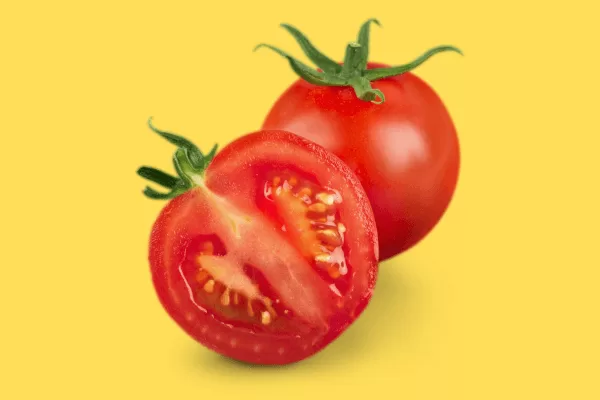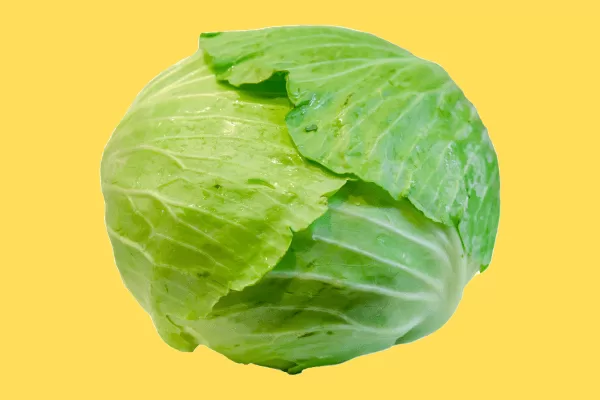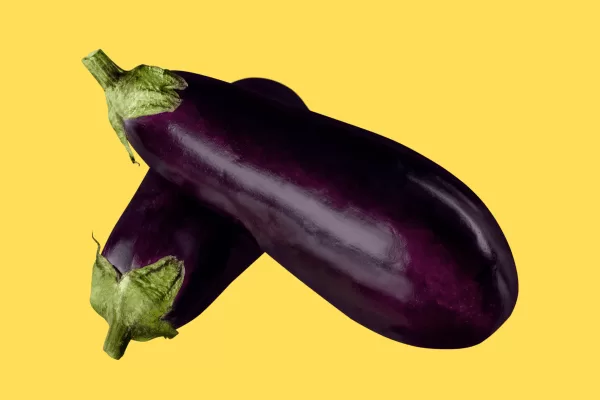Hydroponics is the future of urban gardening. Here, you can not only fulfill your hobby of growing plants but can actually eat the harvest too. Okay, but can I grow the veggies too? Yes, you can
Just like conventional veggies, hydroponic vegetables also have different needs and care instructions. Therefore, if you are just starting out as a hydroponic grower, there are some easy-to-grow vegetables that you should grow first.
Here’s a list of the top 12 best vegetables to grow hydroponically with ease. Once you get the hang of it, then you can move to more expertise-requiring plants like berries or deep root plants.
Table of Contents
Easy-To-Grow Hydroponic Vegetables
1. Radish

| Best System: The ebb and flow system is the best system for radish. |
| pH: 6.0 – 7.0 |
| Temperature: Radish is a cool temperature-loving plant, so the temperature range must be 72 to 76 °F |
When talking about easy-to-grow hydroponic vegetables, radish tops the chart. As it needs relatively cool temperatures, and not much light either.
Both the temperature and light are artificially made in the hydroponic system. So, growing radish takes off much of the load of caring for the crop, from the grower.
Among the radishes, the daikon variety is best for hydroponics. There are some bigger varieties that grow as underground roots but cannot be grown hydroponically.
This easy-to-grow, easier-to-devour vegetable is rich in antioxidants and is often prescribed as a necessary part of the diet of heart patients.
2. spinach

| Best system: Spinach grows fairly great in almost all systems. However, you can get the best yield in the NFT system |
| pH: Optimum pH for growing pH is within the range of 6.0 – 7.5 |
| Temperature: Grows better at a little higher temperature range of 65 to 72 °F |
Spinach is one of the most nutritiously rich vegetables you can grow at home. It provides the body with vitamin K, which is vital for building bones and maintaining their health. Popeye the Sailor man did not exaggerate its nutritious power.
This leafy green vegetable is basically just large leaves used as food. I mean, how hard can it be to grow large leaves, right? Especially with all the modern tools that we have today, anyone with basic hydroponics knowledge can grow clean and green fresh spinach inside his home.
3. lettuce

| Best system: DWC is best hydroponic system for lettuce, to cover the longer roots of lettuce. |
| pH: 5.5 to 6.0 is pH range for hydroponic lettuce |
| Temperature: Best yield at 66.3 °F, while best growth at 71.4 °F |
Lettuce and spinach may look alike, but they are nutritiously different. While lettuce has less of all the nutrients that spinach has, it is not really a bad aspect.
Too much intake of oxalate-rich vegetables like spinach increases the chances of kidney stones by manyfold. Therefore, doctors advise the relatively lenient form of spinach, that is lettuce, to people with high levels of calcium oxalate in their blood and urine.
Lettuce provides the body with β-carotenes and vitamin A, which are necessary for healthy eyes, bones, skin, and body cells.
With just the right amount of all the nutrients, there can’t be a better leafy vegetable to grow in your home hydroponic setup. These are the reasons why lettuce tops the chart of most commonly grown hydroponic vegetables.
4. Broccoli

| Best system: Ebb and flow and DWC are best options for hydroponic broccoli |
| pH: 5.5 to 6.5 |
| Temperature: 55 to 65 °F |
This small tree-like vegetable stands true to its shape. It would not be wrong to say that little vegetable is the tree of life in the veggies world.
It is full of nutrients like calcium, phosphorus, and zinc, adding strength to the bones and teeth. Moreover, it has vitamin A and K which helps in healthy bones as well. In short, if you want a strong body, then broccoli is a must.
Broccoli is a cool temperature-loving crop. In hydroponics, it is grown under lenient conditions like cool temperatures, and mild light.
5. Tomato

| Best system: The best hydroponic system for tomatoes is the Dutch-bucket system, where the plant has a lot of space to move and hence makes more tomatoes. |
| pH: Ideal pH for a hydroponic tomato plant is 6.0-6.5 |
| Temperature: 60 – 70, with a lot of air ventilation |
If someone asks you about a veggie that can go in almost any dish out there, what would you name? Tomato? You are both right and wrong at the same time. Yes, tomato goes in a lot of dishes but is technically a fruit, not a vegetable.
However, due to its closeness with vegetables in the kitchen, everyone treats it as such. “You are defined by who you surround yourself with” hits right when you think of this for tomato being a veggie.
Being full of vitamins A and K, and helps with eyesight, skin, bone, etc. So, a little tomato in everything improves the taste, as well as your health. Win-win situation.
But there is something even better than the tomatoes; home-grown tomatoes. Yes, in hydroponics, you can grow a lot of tomatoes right inside your home with minimal effort.
Click here to read my article on how to grow tomatoes
6. Cucumber

| Best system: Except NFT and rail system, all other systems work great for growing hydroponic cucumbers |
| pH: 5.5 – 6.0 |
| Temperature: 75 to 85 °F |
Cucumbers come in different shapes and sizes. From thick slicers, to thin sliced, and from seedless to full of seeds, there are more than 100 different types of cucumbers.
However, hydroponic growers grow one of the few types. Those types are Thick American Slicer or Juicy Lebanese Cucumber. So, whether you need them for salad or juice, they’ll fulfill your needs well.
Hydroponic cucumber plants need high temperatures and exposure to high-concentration light for longer periods of time. But the results are worth the effort and energy. Hydroponic cucumber gives a very high yield – growing many cucumbers on a single plant.
It takes less than a month before your planet starts giving edible cucumbers.
7. Peppers

| Best system: DWC and ebb and flow are the best systems for hydroponic peppers |
| pH: 5.5-6.8 |
| Temperature: 75-85 °F |
Just like cucumbers, there are a lot of different types of peppers as well, most that you are aware of. Bell peppers, jalapeños, and Cuban peppers are some of the most common.
In hydroponics, growers grow all these different types of peppers. The necessary conditions for their growth vary slightly for different variants.
You must keep the pepper plant’s height short if you want more fruits and fewer useless leaves. Cutting the plant from the top triggers the secondary growth, giving it a more bushy look, and hence more yield.
8. cabbage

| Best system: Ebb and flow is the best hydroponic system for growing hydroponic cabbage |
| pH: 6.2 to 6.6 |
| Temperature: 65 to 75 °F, but can even tolerate the low temperature of even 25 °F. However, giving this low temperature is not recommended, as it will reduce the growth and yield. |
Cabbage is a compact vegetable that grows on a small plant, making it ideal for a hydroponic system as it does not require much space. But since one plant gives one cabbage, you will need plenty of hydroponic systems if you want a lot of cabbage.
However, if you are growing just for your own kitchen and stomach, then a little space is enough.
Cabbage contains higher contents of vitamin C, K vitamin K, and fiber. These nutrient contents help in bone strengthening, immunity, and digestion.
9. cauliflower

| Best system: DWC, and NFT are the best hydroponic systems for cauliflower |
| pH: 6.0 – 7.0 |
| Temperature: 60 to 70 °F with a lot of moisture contents in the air |
Cauliflower is just a different variant of cabbage. Both veggies come from the same plant species and have almost similar nutrient content.
The only difference is that cabbage as a whole is an edible plant, while cauliflower has only its white part taken as a vegetable. Cauliflower, as the name indicates, is shaped like a flower.
Whether you want to grow cabbage or cauliflower depends on your taste and specific needs. Cabbage is used as salad mainly, while cauliflower as a vegetable. Both can be eaten in raw form, though.
10. Zucchini

| Best system: Ebb and flow |
| pH: Ideal pH for zucchini is absolute 6.0 |
| Temperature: 80 to 90 °F |
Zucchini is one of the most common vegetables in typical households. You must have eaten it at your grandma’s if you visited her during the vacations. Normally, people know it by the name of “Gourd”.
There are tens of different types of zucchini. But one thing that each type has in common is tonnes of health benefits for the human body.
The most important benefit is due to the presence of vitamin B6. This vitamin improves neuron functions, oxygen transportation in blood, immunity, and regulating blood glucose levels.
Zucchini needs plenty of light and nutrients to grow healthy and nutritious vegetables. They need a minimum of 14 hours of natural or artificial light. Plus, ensure that the nutrients are always up to mark in the hydroponic tank.
11. Eggplant

| Best system: Ebb and flow, and DWC are the best systems for hydroponic eggplant |
| pH: 5.5 – 6.0 |
| Temperature: 70 to 90 °F during developmental phases, and 75 to 85 °F during flowering phase |
Eggplant is a unique and nutritiously rich vegetable. There are a number of different variants of it. But the most common type is the one because of which it is known as “eggplant”.
Eggplant provides the body with several different antioxidants and dietary fibers that help in improved mental health, digestion, and overall health.
The plant needs to be pruned from the top to stop upward growth and break the apical dominance (the phenomenon in a plant in which the plant grows more in length than in the periphery)
12. Celery

| Best system: Ebb and flow hydroponic system |
| pH: 6.5 |
| Temperature: Being a cool temperature-loving crop, the temperature must be kept below 70 and above 58 °F |
The crunchy green vegetable that is mostly eaten raw and added to the salad is known for its low-calorie contents. High nutrition levels and low sugar contents make it an ideal component of the salad and people struggling with weight loss.
The celery plant as a whole is edible. So, when you grow it, you have two choices. Use the whole plant and grow a new one from scratch, or just prune the upper part and wait for it to grow to the same length before using it again.
I recommend the latter option, as it saves the effort of germinating and growing the whole plant again. The average height of the plant is 8–10 inches.
13. Onions

| Best system: Ebb and flow, and DWC both work best for growing hydroponic onions |
| pH: Onions grow at the pH of 6.0 – 6.7 |
| Temperature: 55 to 75 °F |
One vegetable that tops all others in being the most common component in most culinary dishes is undoubtedly the onion. Many people around the world grow onions as the first choice in their home gardens due to their common use in the kitchen. Luckily, it is also easy to grow onions hydroponically.
Onions are full of sulfur compounds, along with other useful compounds. Their characteristic pungent smell is also due to these compounds. While the odor may be unpleasant, these compounds are very helpful in the human body.
Sulfur compounds found in onions reduce blood cholesterol levels. They also naturally break down the unneeded blood clots in the blood vessels. This way, they act as the natural guards against heart diseases. Having onions in the diet reduces the risks of heart disease by many folds.
In hydroponics, onions require light exposure for a longer duration, while the temperature must be lesser.
Now that you know the best hydroponic vegetables to grow with ease, all that remains is to actually grow them. Once you know how to take care of the basic ones, then move on to those that demand more care. Also, make sure that you get the temperature and pH of the hydroponic plants right. Moving ahead gradually is the way to master anything. In this journey, we’ll be right beside you, guiding you on every step.
